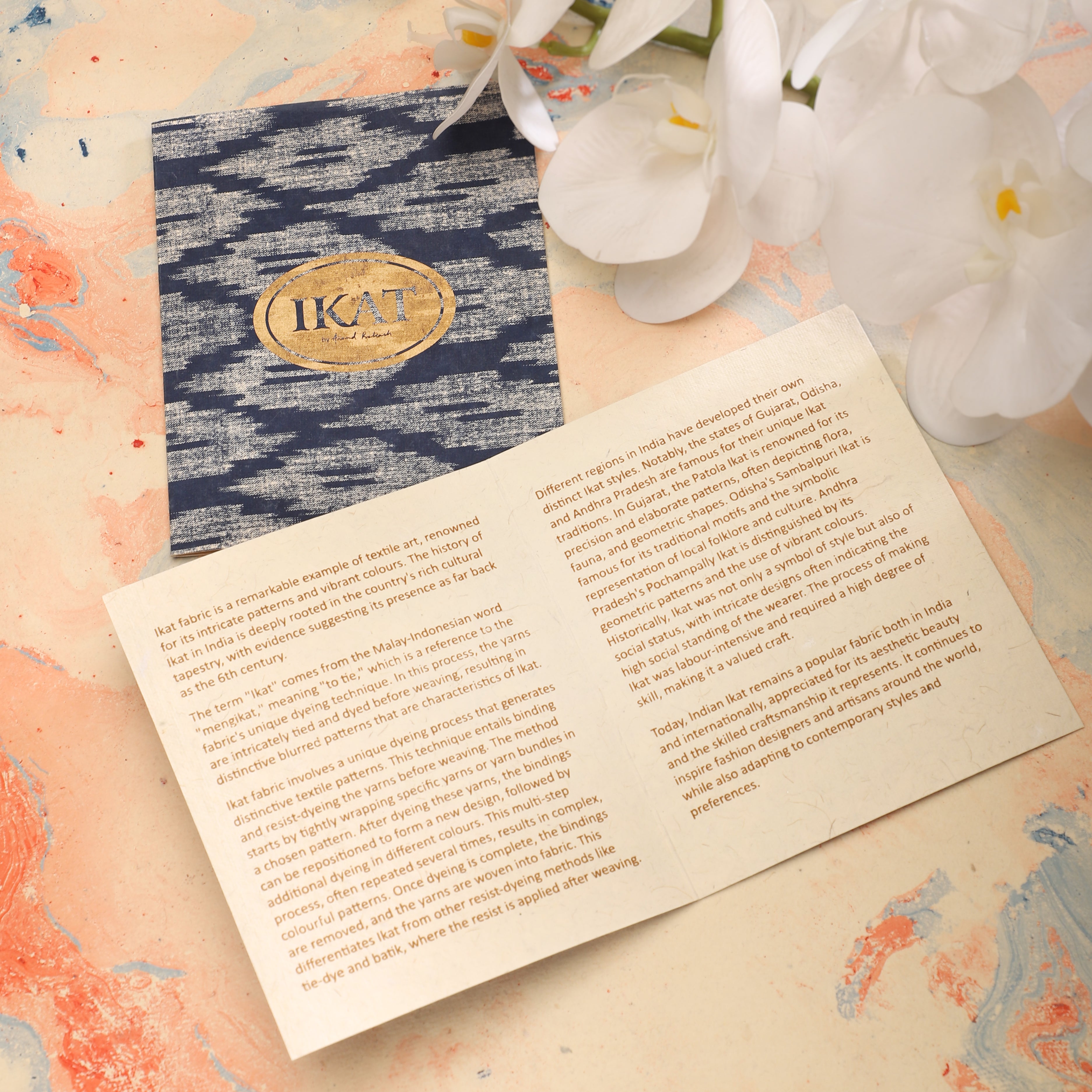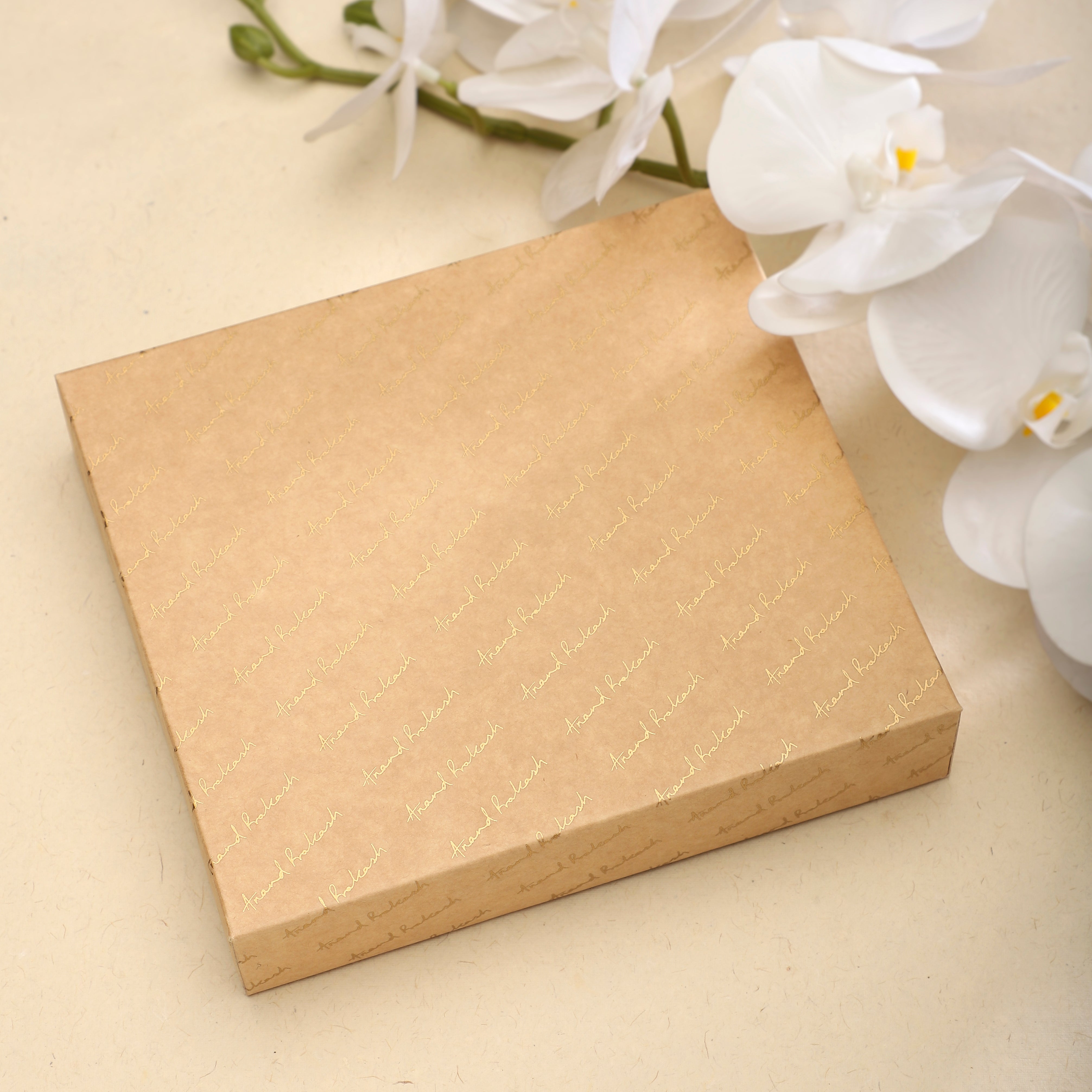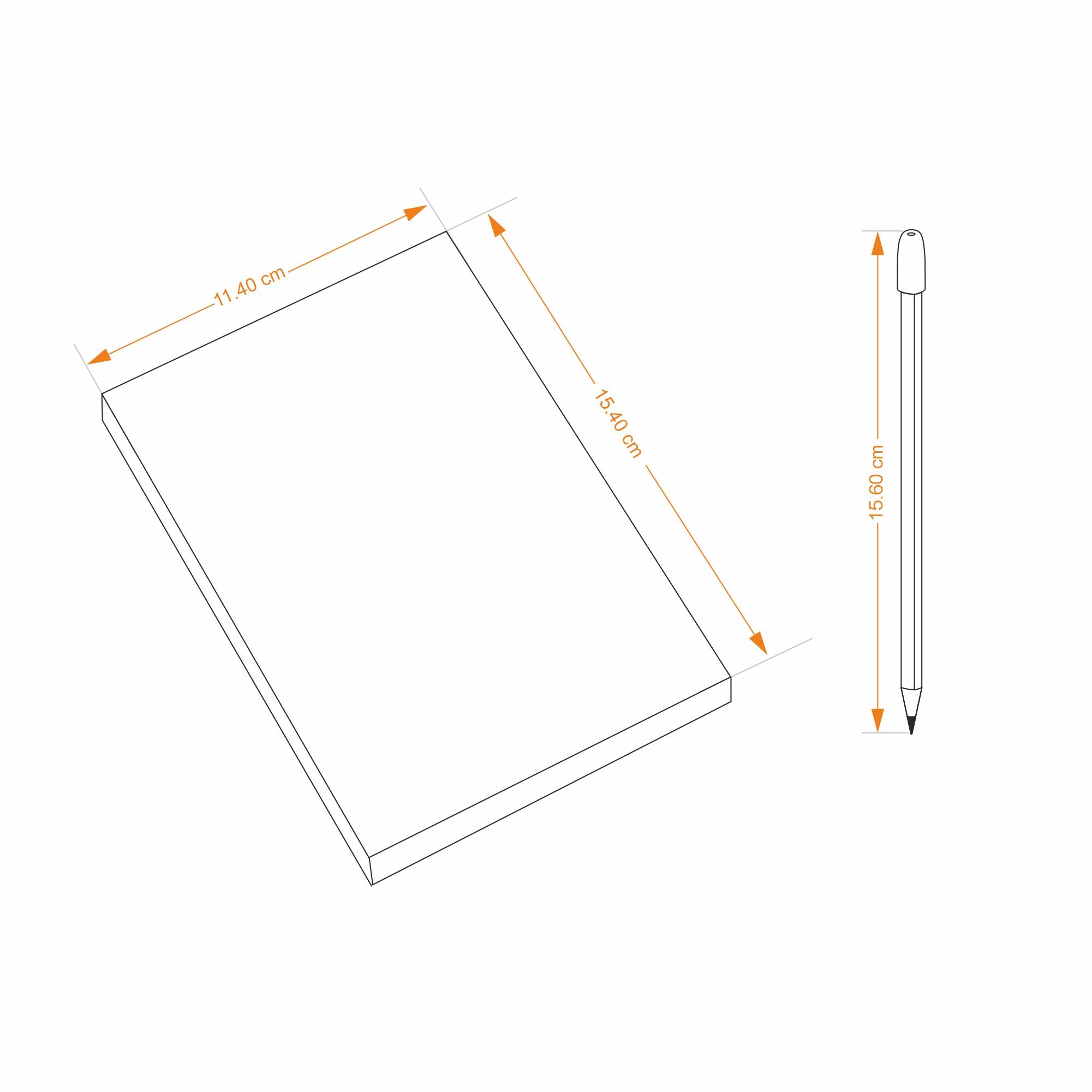Description
Our Ikat Indigo journal is the perfect space for writing your thoughts, ideas, dreams, and adventures. Crafted by experienced artisans and made in limited numbers, our journals are handmade with the highest quality craftsmanship and attention to detail. Each journal comes with a matching bookmark, handmade pencil and a booklet that speaks about the process of Ikat.
- Cover: Hand-dyed Ikat Indigo cotton textile sourced from village units
- Paper: 100% recycled, wood-free handmade paper sourced from rural units
- Page type: Blank, hand-stitched
- Paper texture: Rough, handmade
- Writing: Use a ballpoint pen, pencil or gel pen
- Pages: 100 pages (50 leaves)
- Pencil: 1 pc made with handmade paper
- Metal bookmark: Small tree design
- Packaging: Upcycled wood tray and an outer gift box
- Journal size: 11.40 x 15.40 cms
- Pencil length: 15.60 cms
- Box: 15.40 x 17.30 cms
About: Ikat
Ikat fabric is a remarkable example of textile art, renowned for its intricate patterns and vibrant colours. The history of Ikat in India is deeply rooted in the country's rich cultural tapestry, with evidence suggesting its presence as far back as the 6th century.
The term "Ikat" comes from the Malay-Indonesian word "mengikat," meaning "to tie," which is a reference to the fabric's unique dyeing technique. In this process, the yarns are intricately tied and dyed before weaving, resulting in distinctive blurred patterns that are characteristics of Ikat.
Ikat fabric involves a unique dyeing process that generates distinctive textile patterns. This technique entails binding and resist-dyeing the yarns before weaving. The method starts by tightly wrapping specific yarns or yarn bundles in a chosen pattern. After dyeing these yarns, the bindings can be repositioned to form a new design, followed by additional dyeing in different colours. This multi-step process, often repeated several times, results in complex, colourful patterns. Once dyeing is complete, the bindings are removed, and the yarns are woven into fabric. This differentiates Ikat from other resist-dyeing methods like tie-dye and batik, where the resist is applied after weaving.
Different regions in India have developed their own distinct Ikat styles. Notably, the states of Gujarat, Odisha, and Andhra Pradesh are famous for their unique Ikat traditions. In Gujarat, the Patola Ikat is renowned for its precision and elaborate patterns, often depicting flora, fauna, and geometric shapes. Odisha's Sambalpuri Ikat is famous for its traditional motifs and the symbolic representation of local folklore and culture. Andhra Pradesh's Pochampally Ikat is distinguished by its geometric patterns and the use of vibrant colours. Historically, Ikat was not only a symbol of style but also of social status, with intricate designs often indicating the high social standing of the wearer. The process of making Ikat was labour-intensive and required a high degree of skill, making it a valued craft.
Today, Indian Ikat remains a popular fabric both in India and internationally, appreciated for its aesthetic beauty and the skilled craftsmanship it represents. It continues to inspire fashion designers and artisans around the world, while also adapting to contemporary styles and preferences.
Please note: There may be minor imperfections in the textile as it is handwoven on looms and on the papers as they are handmade from recycled cotton rags. These imperfections are natural and add beauty to the product as each piece is unique.





